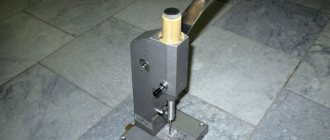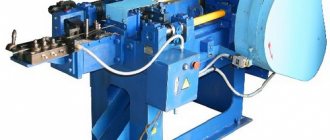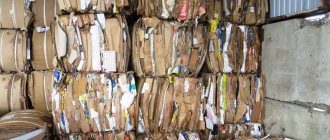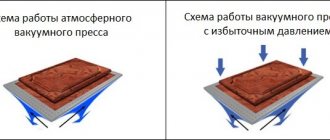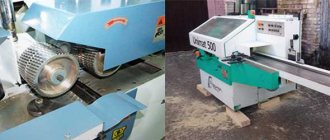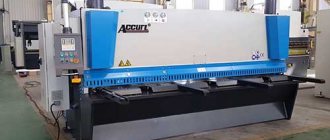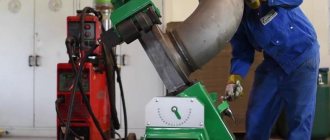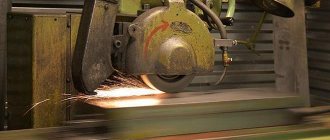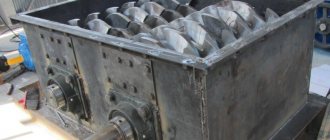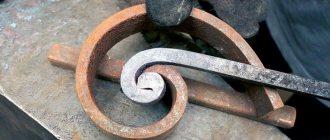Hydraulic machine for the production of hyper-pressed Lego bricks “TOR-30”
The company returns and exchanges this product in accordance with legal requirements.
Return deadlines
Returns are possible within 7 days after receipt (for goods of good quality).
Return delivery of goods is carried out by agreement.
According to current legislation, you can return a product of good quality or exchange it if:
- the product has not been used and has no signs of consumer use: scratches, chips, abrasions, stains, etc.;
- the product is fully assembled and in its original packaging;
- all labels and factory markings are preserved;
- the product retains its presentation and its consumer properties.
Hydraulic machine for the production of hyper-pressed Lego bricks “TOR-30″ with a pressing force of 30t
Lego machine, press for Lego bricks “TOR” - One of the latest developments of our engineers. Professional, most reliable and practical hydraulic machine for hyperpressing.
The main production process consists of pressing one button, the machine itself will supply the working mixture from the storage hopper into the matrix, level it, remove excess, compress and produce the finished product, which will only need to be picked up and placed on a pallet for storage and strengthening.
Advantages of Lego bricks:
- Fast and precise masonry without the involvement of masons. When building objects from Lego bricks, the first row is laid out level, further masonry turns into a job that anyone can handle, since the top brick fits into the grooves of the bottom brick. Communication cables can be laid through the holes in the brick, or reinforcement can be concreted into them for strength.
- The facade of the house is ready immediately - the walls are painted during production;
- Additional strength – reinforcement + concreting of brick cavities;
- Easily accessible and inexpensive components.
- Low thermal conductivity
- Frost resistance. This indicator can be easily improved by changing the manufacturing composition.
- Durability and low water absorption 4-5% Optimally suited for regions with high humidity and high precipitation. People living in a middle climate will appreciate this quality, since the indoor humidity will be noticeably lower. Strength M150 and M250, which is suitable for the construction of multi-storey buildings, commercial buildings, offices. The service life of buildings will be many times longer.
- Simplicity and economy. Thanks to the shape and technical features, Lego brick structures are built faster, which saves time and money. The technology of semi-dry brick pressing eliminates the firing stage, which reduces the cost and production time.
Basic composition of the mixture: Screenings - 75-90% Cement - 7-18% Water - 7-13%
To make Lego bricks you can use the following components:
- Screenings - limestone screenings, shell rock, marble screenings, construction stone, dolomite, granite, dolomite, gravel, some types of marble, basalt, diorite.
- Sand. For pressing, selection is carried out experimentally.
- Construction waste, broken ceramic bricks. Requires additional processing and grinding.
- Cement.
- Clay. When working on mechanical and hydraulic presses for the production of Lego bricks, clay and loam can be added to make the mixture more plastic.
Our plant produces Lego machines of various pressures and purposes, from the production of Lego bricks for our own needs to automated brick factories. Purchasing a machine for making Lego bricks can reduce construction costs by four times, and is also a great business idea. The cost of such bricks is no more than 1,500 rubles per 1 m3. Payback period - 1 month.
Machines of the "TOR" series can be equipped with a production line in order to simplify the production process and improve the quality of the finished product; for this we offer additional equipment from our production: concrete mixer, belt conveyor, drum screen, automation system for controlling the production line.
All models have a reinforced design, which significantly increases their service life.
We advise our clients and partners on all brick production issues. We will make any modifications to the basic installation, at the request of the client.
How to make cinder blocks
You need to put a heaping mixture into the mold, turn on the vibrator for 3-5 seconds, the solution will settle. If there is not enough solution, report it, insert the clamp and turn on the vibrator again. After the clamp “sits” on the stops, the cinder block is formed. Turn on the vibrator and remove the uniform.
Note! The form is removed with the vibrator turned on, i.e. Harvesting is carried out at the “flight”.
Cinder blocks must dry within 5 days to a week, and the required hardness must be gained within 30 days at a temperature of at least 20°C in conditions of high humidity.
Machine for producing cinder blocks
Sales of products
Even today, Lego is relevant among builders. After all, it has a lot of advantages and benefits that other building materials do not have. In addition, modern opportunities open up a lot of options for you to sell manufactured products. Let's say that it is currently very popular to sell your products online. Online trading will allow you to save money on opening your own store. Sales can be carried out at home, either through a specialized web resource, in other words, your own online store, or by posting advertisements online.
In addition, you can sell bricks in real retail outlets that specialize in building materials. Here you must first agree with the management of such a store. Also, an equally effective option for selling goods is selling material to construction companies.
Dimensions and weight
Hyperpressed brick size:
- single: 250×120×65 mm;
- narrow: 250×60×56 mm;
- spoon: 250×85×65 mm.
Quite often there are products in which a length of 230 mm and a thickness of 65 mm are combined with a width of 50, 56, 100, 107 mm.
Weight of hyper-pressed brick: 4.2 kg (for standard size 250*120*65 mm).
What you will need
You can get bricks in two ways: mixed and centralized.
- The first method is mainly used by small enterprises. Here the raw materials are supplied separately to each machine.
- Large brick factories use a centralized method, when the raw material is sent in one stream to mixers, and then goes simultaneously to several presses.
First, let's talk about the materials and substances used for the production of sand-lime brick.
Raw materials
So, what is the raw material for the production of sand-lime brick? It is made from inexpensive component materials, namely: lime, quartz sand and ordinary water. The production process also uses dye (if the product requires coloring) and components that help the mixture harden.
- The bulk of the product (92%) is sand. Therefore, they try to locate brick factories near rich deposits of this bulk material. The shape of the sand grains affects the reaction with lime, the formation of the finished mixture and its subsequent strength. Before being added to the production process, sand must be treated. The finished version should not contain foreign objects, stones, branches, lumps of clay and leaves. These impurities will lead to serious equipment failure and product defects.
- The percentage of lime in the product is 8%. Lime should have the ability to quickly extinguish and be burned out.
- Water is used at all stages in the brick production process. It also has serious requirements for rigidity. Hard water forms scale in industrial boilers and damages equipment.
Read more about equipment for the production and splitting of sand-lime bricks.
Equipment
The sand-lime brick production line includes the following equipment:
- A chip crusher is equipment for crushing various materials into small and medium-sized pieces (as is the case with wood concrete).
- Noria is a vertical conveyor.
- A lime silo is a cylindrical steel vessel in which the lime slaking process is carried out.
- A ball mill is equipment that is used for secondary grinding of components.
- A sand silo is a cylindrical steel vessel containing a sand-lime mixture.
- Screw-type conveyor is equipment used for moving dusty materials.
- A dispenser is a device with which bulk mixtures are continuously dosed.
- Twin-shaft mixer – a device for mixing components. The raw composition is fed into it.
- Lime slaking bunker is a container in which lime slaking takes place continuously.
- Belt type conveyor - movement mechanism.
- Runner mill – equipment for grinding raw materials.
- Bridge - equipment for transporting and loading prepared raw bricks into an autoclave.
- Hydraulic press – equipment for forming modular bricks.
- Autoclave is equipment for processing raw bricks under pressure.
- Crane is a mobile machine with the functions of loading, unloading and transporting heavy products;
- A forklift is a special equipment for loading brick products.
The production technology of sand-lime brick with a detailed diagram, its production at home - all this is discussed below.
A specialist will tell you in the video below what criteria the machine, as well as other equipment for making sand-lime bricks, must meet:
What clay is suitable for making bricks?
brick making mold
There must be the correct ratio of clay to sand. To check whether the clay is suitable for you, you need to roll it into a small ball, throwing it from a height of 1 meter to the floor, and look at its condition. It shouldn't be too flattened. If it is too flattened, add sand.
If you just decide to make a small amount of brick for yourself, you can get by with a brick mold. It is made from oak, birch or poplar. For better adhesion to the solution, timber is stuffed at the bottom.
Working with the form is simple:
- For better extraction of the formed product, the mold is moistened with water and sprinkled with sand.
- Fill with the mixture above the edges of the mold.
- From above, the clay is pushed into the mold by rolling with an ordinary rolling pin.
- The brick is pushed out of the mold by turning it over. Such briquettes can already be used after drying, without burning.
After reading this article, we hope that you will be able to make brick pressing equipment at home.
Our recommendations:
Subscribe to our VKontakte news!
How to choose a press to buy
The choice of equipment is influenced by a number of technical issues. This includes the volume of production and what kind of brick will be produced. It is necessary to consider whether this press will be new or used, domestic or imported. Each of these parameters affects what the price of a brick press will be.
The answer to the question of which brick press to buy will help clarify the price category of the product. If the press is needed for home needs, purchasing or manufacturing it will not entail large expenses. Although this can only be discussed in comparison. The purchase of equipment for the production of large volumes will cost more than one hundred thousand rubles.

